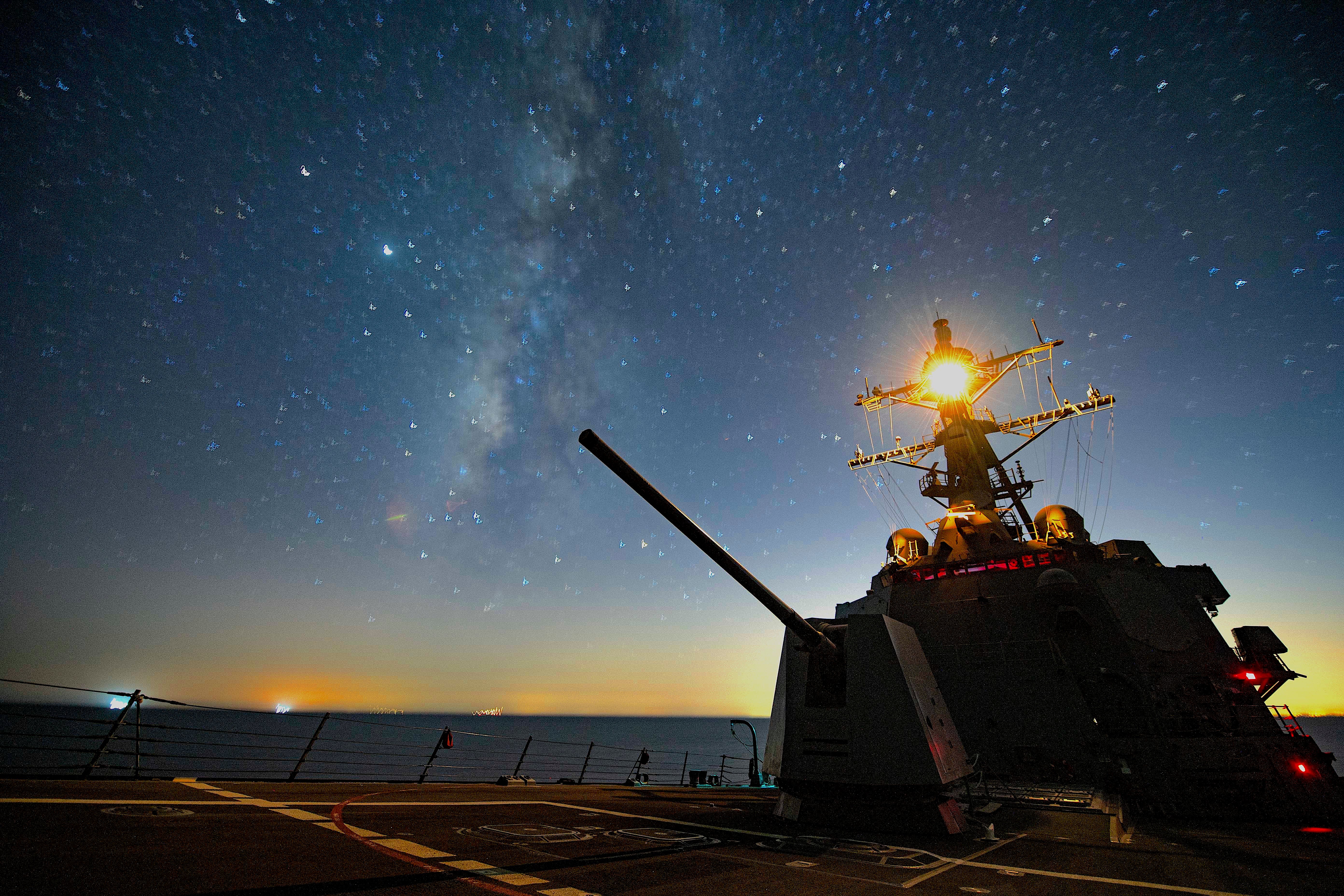
The head of the Navy warned the surface force there is little time to waste in designing and fielding key technologies it will need for a lethal and distributed future fleet.
Chief of Naval Operations Adm. Mike Gilday’s new guidance to the service narrows in on a group of capabilities he says it needs to develop in the next decade to be competitive with Russia and China over the next century. The CNO Navigation Plan, published today, singles out hypersonic weapons, directed energy, electronic warfare advancements and unmanned surface systems as key components of the service’s development efforts.
While the acquisition priorities are by no means new initiatives, the new plan codifies and clarifies the Navy’s intended direction – specifically for the surface fleet — after five years of program starts, stops and pauses that have arguably disrupted the momentum of service’s development of its next generations of weapons and ships.
“I began to feel more comfortable about what I believed the Navy really needs to focus on in this decade,” Gilday told reporters on Friday.
“I don’t mean to be dramatic, but I feel like if the Navy loses its head, if we go off course and really take our eyes off those things we need to focus on with respect to readiness capabilities, capacity, and sailors — I think we may not be able to recover in this century based on the trajectory that the Chinese are on right now.”
The new fleet guidance breaks Gilday’s priorities into four areas: readiness, capabilities, capacity and personnel.
For readiness, Gilday stressed on-time delivery of ships coming out of maintenance and expansion of repair infrastructure, as well as an expansion of technically challenging, sophisticated exercises for the fleet. He singled out the upcoming Large Scale Exercise 2021 as an example of how the Navy and Marines will expand training.
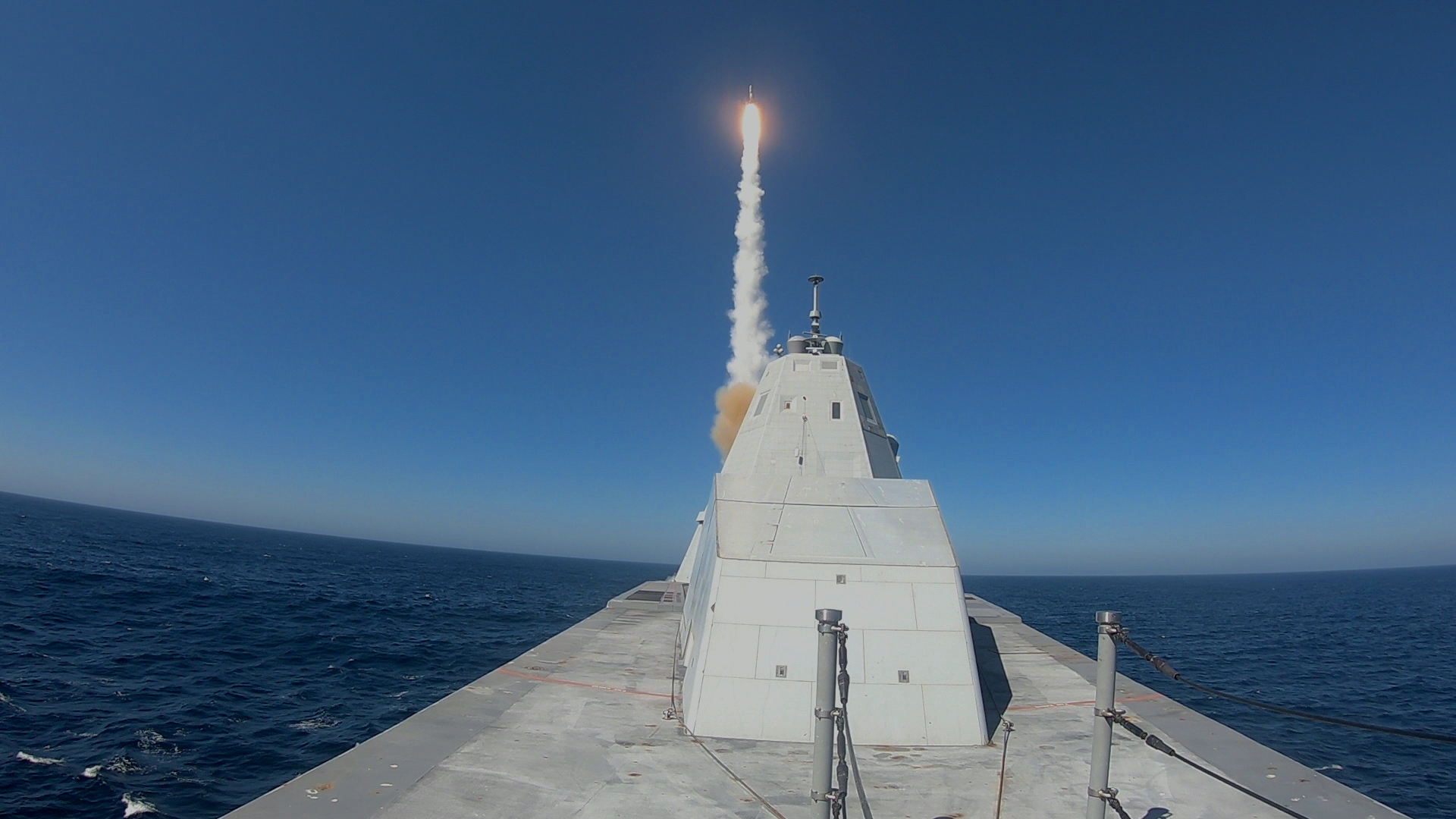
“This cycle of learning trains our sailors for high-end warfighting and drives updated joint and combined naval concepts, fleet requirements and future naval capabilities,” he said on Monday during the Surface Naval Association 2021 symposium.
In December, Gilday and Marine commandant Gen. David Berger said the exercise would be the first major test of the Navy’s Distributed Maritime Operations (DMO) concept and the Marines’ Littoral Operations in a Contested Environment (LOCE) and Expeditionary Advanced Base Operations (EABO) concepts.
For new capabilities, the service is “developing and fielding more options to deliver lethal and non-lethal effects on maritime, air, space, and shore-based targets. These include missiles, torpedoes, mines, cyber weapons, and devices that target the [electromagnetic] spectrum as well as seabed and subsea systems. We are also leveraging current platforms and designing future ones to deliver longer-range, higher-speed weapons such as hypersonic missiles,” reads the report.

A maritime fight with China in the Western Pacific is the toughest overall problem the Navy faces, defense officials have repeated to USNI News. The People’s Liberation Army has invested in a wide array of surface ships and land-based ballistic missiles in a scheme designed to overwhelm U.S. ships’ ability to intercept incoming attacks.
“I directed the development of a campaign plan for directed energy capability — [these are] laser capabilities that we need on our ships. We primarily need that capability to knock down missiles,” Gilday told reporters.
“Chinese investments… are heavy in missiles and heavy in space.”
Gilday also stressed the need for the emerging networked fleet that will merge the sensors of several platforms to create a targeting network for ships and aircraft – now known as the Naval Operational Architecture and part of the larger Joint All-Domain Command and Control.
Rear Adm. Doug Small, commander of the Naval Information Warfare Systems Command, is guiding the development as part of the service’s “Project Overmatch” effort, USNI News reported in October.
The future capabilities writ large will be driven by expanding the service’s ability to perform power projection and sea control missions, Gilday said.

PACIFIC OCEAN (May 21, 2020) The amphibious transport dock ship USS Portland (LPD 27) successfully tests a Solid State Laser – Technology Maturation Laser Weapon System Demonstrator (LWSD) Mark 2 MOD 0.The SSL-TM program builds upon the Office of Naval Research’s previous directed-energy developments, like the Laser Weapon System (LaWS), which was successfully tested at-sea aboard the Afloat Forward Staging Base (Interim) USS Ponce (ASB(I)) 15 in 2014. (U.S. Navy photo/Released)
“We know that budgets are likely to be constrained, and prioritization is going to be important. We can’t afford everything,” he said on Friday.
“I go back to thing one, which was control of the sea and power projection. I’ve got to buy stuff and make investments and develop concepts that are going to put us in a better position with respect to those two mission areas.”
That includes getting rid of or shelving some missions.
“To remain ahead of our competitors, we will divest ourselves of legacy capabilities that no longer bring sufficient lethality to the fight. This includes divestment of experimental Littoral Combat Ship hulls, legacy cruisers, and older dock landing ships. It also includes divesting non-core Navy missions like Aegis Ashore. Transferring shore-based ballistic missile defense sites to ground forces enables Sailors to focus on their core missions at sea and frees up resources to increase our lethality,” reads the plan.
In terms of capacity, the Navy will start by producing and maintaining attack and ballistic-missile submarines.
“Our future fleet design places a premium on expanding our undersea advantage. We will continue to build Virginia-class submarines at a sustainable rate, while developing a follow-on attack submarine program and equipping them with conventional prompt strike capability,” reads the new plan.
“Sea control and sea denial from beneath the seas is one of our core advantages – we will not yield any ground to our competitors.”
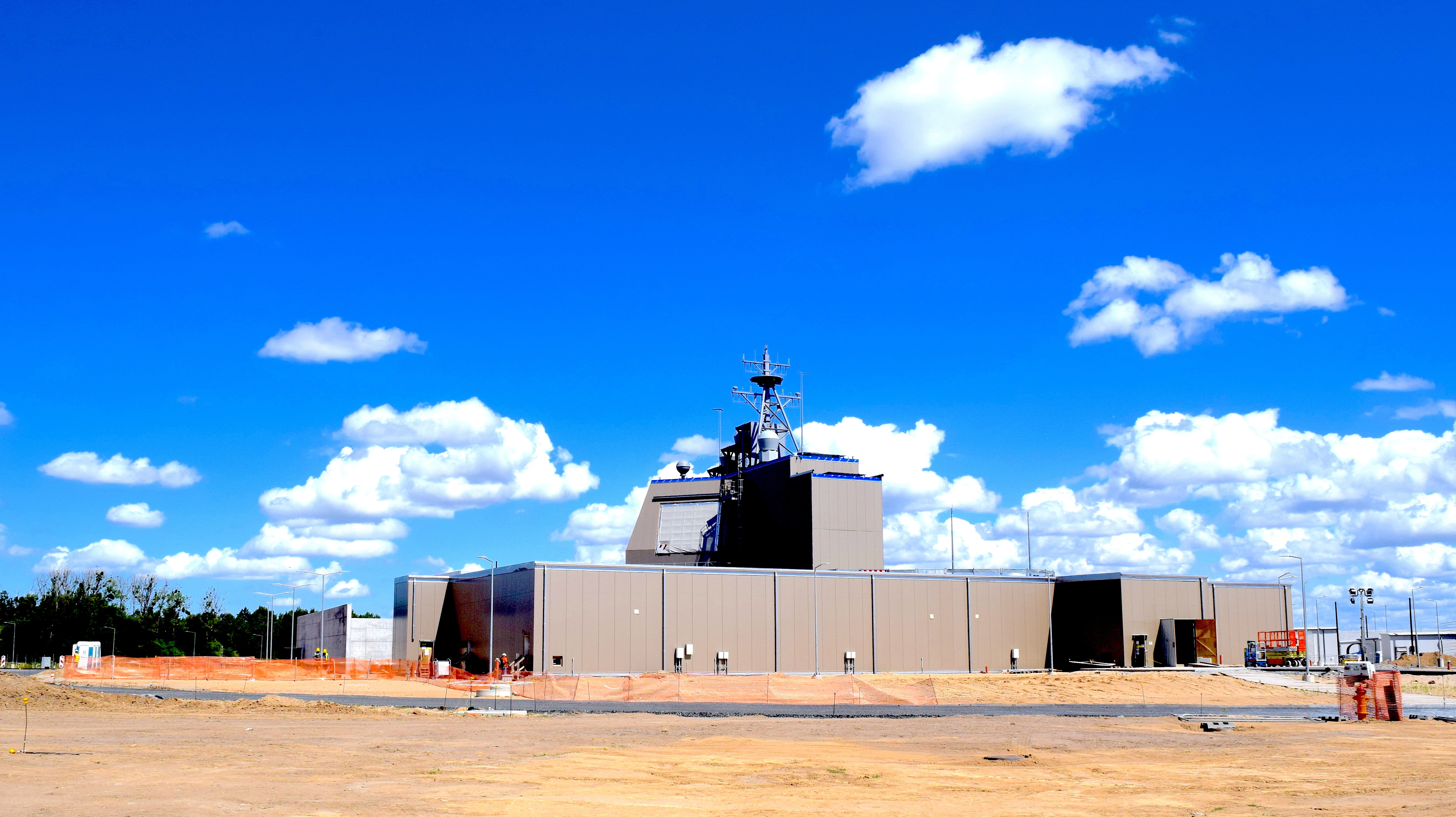
The U.S. far outperforms the Chinese in submarine construction and development. Russia’s latest crop of Yassen-class nuclear attack submarines are highly regarded, but Moscow has not been able to deliver the boats in numbers.
The second key component to expand capacity will be the introduction of more unmanned systems into the service.
“They will expand our intelligence, surveillance, and reconnaissance advantage, add depth to our missile magazines, and provide additional means to keep our distributed force provisioned,” reads the report.
“Moving toward smaller platforms improves our offensive punch while also providing affordable solutions to grow the Navy. Through analysis, simulations, prototyping, and demonstrations, we will systematically field and operate systems that possess the endurance and resilience to operate with infrequent human interaction.”
The level of autonomy and reliability of the unmanned systems have been a point of contention between the Navy and Congress, which put restrictions on developing and fielding the systems pending a land-based testing regime. In November, USNI News reported the Pentagon’s autonomous Ghost Fleet large USV test platform made a successful transit from the Gulf Coast to California with limited human intervention.
The USVs and a new class of smaller warships are part of the Navy’s plan to spread out sensors across a wider battlespace, rather than have firepower concentrated on larger ships.
“Our future fleet design also places an emphasis on a larger number of smaller surface combatants like the new Constellation-class frigates. Fielding greater numbers of more affordable, smaller surface combatants allows us to operate in a more distributed manner – both in day-to-day competition and in high-end combat,” reads the plan
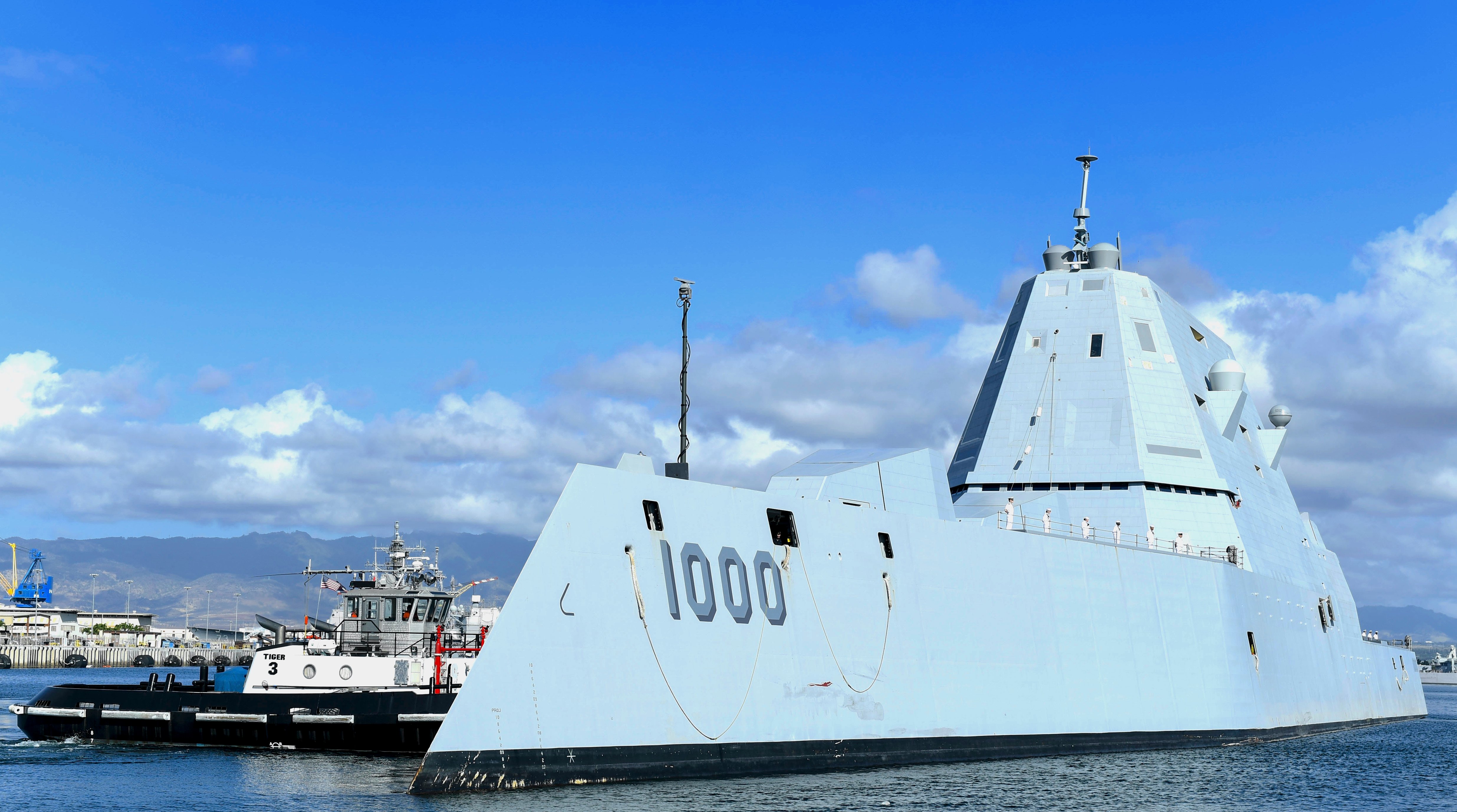
The service is also moving ahead with its follow-on to the Ticonderoga-class and Arleigh Burke-class guided-missile warships. Formerly known as the Large Surface Combatant, the DDG Next will be in a position to have the capacity to add larger hypersonic missiles, high energy weapons and sensors and borrow the integrated power system from the Zumwalt class of guided-missile destroyers.
“I don’t want to build a monstrosity,” Gilday said in October. “When you talk about large surface combatants, people in their mind’s eye are thinking battleships. That’s not what I’m talking about. That’s not where we’re going.”
He also said carriers would be key to the future fleet and teased a future air wing initiative in his address at SNA. The Navy is currently developing a replacement for the current F/A-18E/F Super Hornet fleet. USNI News reported in August the Navy had stood up the Next Generation Air Dominance (NGAD) office.
Gilday repeated that the Navy has little margin for cost growth for any of the new platforms under development.
“We can’t afford to have cost overruns,” he said on Monday.
“We really have to deliver those on time, on budget and with the type of capabilities that work the first time.”
The Navy is also moving ahead with education efforts and changing how it trains sailors for jobs in the fleet, as well as other reforms brought about by the Navy’s ongoing “culture of excellence” review.
The CNO’s NAVPLAN follows last month’s reveal of the Tri-Service Maritime Strategy that laid out the priorities for the Navy, Marines and the Coast Guard.
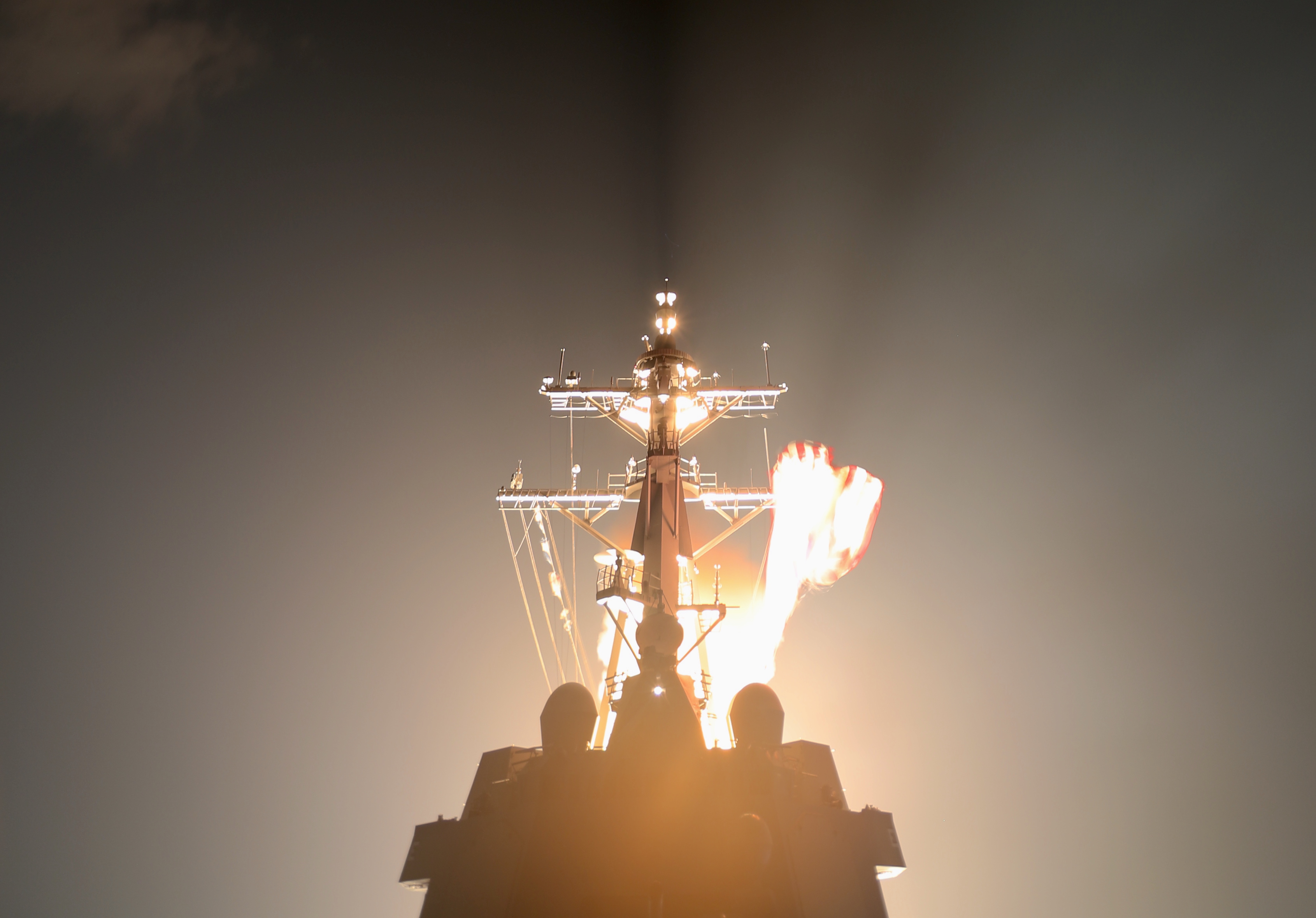
The new guidance replaces the sprawling Design for Maintaining Maritime Superiority documents issued by former CNO Adm. John Richardson, which were a dense set of directives that many in the service found difficult to understand, several current and former Navy officials have told USNI News. Three months after taking over as CNO, Gilday issued a modification to Richardson’s guidance with the intent of making the tenants of the plan more digestible.
In an address to the Surface Navy Association, Gilday singled out retired Naval Surface Forces commanders Tom Rowden and Tom Copeman as drivers of the offensive mindset that permeated the new NAVPLAN and the Navy’s current direction.
“I have to thank Admiral Rowden and Admiral Copeman,” he said.
“If you take a look at the journey of the surface navy of the past 10 to 15 years, [they] began to ring that bell about lethality, about making the shift from defensive systems to offensive systems.”
Gilday cited Rowden’s work on the 2015 Proceedings article “Distributed Lethality” as a major influence on the Navy’s current direction rooted in the basic missions of the service.
“The functions of the United States Navy are timeless: sea control and power projection,” Gilday said.
“Those are the things that we can’t take our eye on them, because if we do, we may not recover.”





